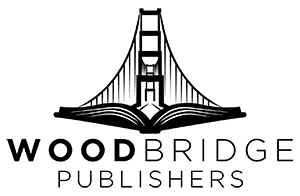Publishing a poem book can be deeply rewarding, allowing poets to share their work with a wider audience. This guide will walk you through the steps to publish your poem book, from initial preparation to marketing your finished product.
Preparing Your Manuscript
Before publishing your poem book, you must ensure your manuscript is polished and ready for submission or self-publishing.
Selecting and Organizing Poems
- Curate Your Best Work: Select poems that represent your best work and fit the theme or tone of your collection.
- Order and Structure: Decide your poems’ logical or thematic order. This could be chronological, thematic, or based on the flow of emotions or ideas.
- Sections and Divisions: Consider dividing your book into sections if it helps enhance the reader’s experience.
Editing and Proofreading
- Self-Editing: Read through your manuscript multiple times, focusing on different aspects like flow, grammar, and spelling.
- Peer Review: Share your manuscript with trusted friends or fellow poets for feedback.
- Professional Editing: Consider hiring a professional editor specializing in poetry to ensure your manuscript is polished.
Formatting Your Manuscript
- Consistent Formatting: Ensure consistency in font, spacing, and layout. Poetry often relies on specific formatting for impact, so pay attention to line breaks and indentation.
- Manuscript Guidelines: If submitting to publishers, adhere to their specific formatting guidelines.
Choosing a Publishing Route

You can take several routes to publish your poem book, each with its own advantages and challenges.
Traditional Publishing
- Research Publishers: Look for publishers specializing in poetry or having a strong catalog.
- Submission Guidelines: Follow each publisher’s submission guidelines carefully. This usually includes a cover letter, a synopsis, and a sample of your work.
- Literary Agents: Consider finding a literary agent to help you navigate the publishing process and connect you with publishers.
Self-Publishing
- Platforms: Use Amazon Kindle Direct Publishing (KDP), IngramSpark, or Lulu to self-publish your book.
- ISBN and Copyright: Obtain an ISBN for your book and consider registering your copyright.
- Print and Digital Formats: Decide if you want to offer your book in print, digital, or both formats.
Hybrid Publishing
- Hybrid Publishers: These publishers offer a middle ground between traditional and self-publishing. They provide some of the services of a traditional publisher while allowing you to retain more control and royalties.
- Cost and Services: Be aware that hybrid publishing often involves upfront costs, so evaluate what services are included and if they meet your needs.
Design and Layout
The design and layout of your poem book are crucial for making a good impression and enhancing the reader’s experience.
Cover Design
- Professional Design: Invest in a professional cover designer who can create an eye-catching and representative cover for your book.
- Cover Elements: Include your book title, your name, and any relevant images or graphics that reflect the theme of your poetry.
Interior Layout
- Typography: Choose readable fonts that complement your poetry’s tone.
- Page Layout: Ensure that each poem’s layout is consistent and visually appealing. Pay attention to margins, spacing, and alignment.
- Illustrations and Graphics: If illustrations or graphics complement your poems, ensure they are high-quality and appropriately placed.
Proof Copies
- Physical Proof: Order a physical proof copy if you publish in print to check for layout or formatting issues.
- Digital Proof: Review the digital proof carefully to ensure all elements are correctly formatted.
Publishing Your Book
Once your manuscript is ready and your design is complete, it’s time to publish your poem book.
Uploading to Platforms
- Self-Publishing Platforms: Follow the instructions on your chosen self-publishing platform to upload your manuscript, cover, and metadata.
- Metadata: Fill out all the necessary metadata fields, including your book title, author name, description, keywords, and categories.
Setting a Price
- Market Research: Research similar poetry books to determine a competitive price for your book.
- Pricing Strategy: Decide on your pricing strategy. Consider offering promotional pricing during the launch period to attract initial readers.
Distribution Options
- Wide Distribution: Choose wide distribution to make your book available on multiple platforms and bookstores.
- Exclusive Distribution: Some platforms, like Amazon KDP, offer exclusive distribution options that can provide higher royalties or promotional opportunities.
Marketing and Promotion
Marketing is essential to ensure your poem book reaches its intended audience.
Building an Author Platform
- Website and Blog: Create an author website and blog to showcase your work, share updates, and connect with readers.
Social Media Presence
- Social Media Accounts: Create and maintain social media accounts on platforms like Facebook, Instagram, Twitter, and LinkedIn to engage with your audience.
- Content Strategy: Share excerpts from your poems, behind-the-scenes looks at your writing process, and updates about your book. Engage with your followers by responding to comments and messages.
Book Launch
- Launch Events: Plan a book launch event, either in person or virtually, to celebrate the release of your poem book. Consider partnering with local bookstores, libraries, or literary organizations.
- Press Release: Write and distribute a press release to announce your book launch. Send it to local newspapers, literary magazines, and online literary blogs.
- Promotional Campaigns: Run promotional campaigns on social media, book promotion websites, and through email newsletters to generate buzz and attract readers.
Reviews and Testimonials
- Advance Review Copies (ARCs): Send advance review copies to book bloggers, reviewers, and influencers in the poetry community to garner early reviews and testimonials.
- Encourage Reader Reviews: Ask readers to leave reviews on platforms like Amazon, Goodreads, and your social media pages. Positive reviews can significantly boost your book’s visibility and credibility.
Book Readings and Signings
- Local Events: Arrange readings and book signings at local bookstores, libraries, and literary festivals. These events provide opportunities to connect with readers and sell copies of your book.
- Virtual Readings: To reach a wider audience, host virtual readings and signings via platforms like Zoom or Facebook Live.
Networking and Collaboration
Literary Communities: Join online and offline literary communities and organizations to network with other poets and authors.
Collaboration: Collaborate with other poets, writers, and artists for joint readings, anthologies, or cross-promotional activities.
Monitoring Your Book’s Performance

After publishing and promoting your poem book, monitoring its performance and making adjustments as needed is important.
Sales and Analytics
Sales Data: Regularly check your sales data on self-publishing platforms to track how well your book is selling.
Reader Engagement: Monitor reader engagement on social media, your website, and other platforms to understand how your audience responds to your book.
Adjusting Marketing Strategies
Analyze Results: Analyze the results of your marketing efforts to determine what’s working and what’s not.
Refine Strategies: Based on your analysis, refine your marketing strategies. This might include changing your social media approach, targeting different audiences, or experimenting with new promotional tactics.
Seeking Feedback
Reader Feedback: Pay attention to feedback from readers and reviewers. Use constructive criticism to improve future editions of your book or your next project.
Professional Feedback: Seek feedback from literary agents, editors, and other professionals in the industry to gain insights and improve your work.
Long-Term Planning
Publishing a poem book is not just about the initial launch; it’s also about sustaining interest and planning for the future.
Building a Catalogue
Future Projects: Plan future poetry collections or other writing projects. Consistently publishing new work helps build your catalog and keeps your audience engaged.
Anthologies and Collaborations: Consider contributing to anthologies or collaborating with other poets and writers to expand your reach.
Continuous Learning
Writing Workshops: Participate in writing workshops and courses to continue honing your craft.
Industry Trends: Stay updated on industry trends and changes in the publishing landscape to adapt and thrive as an author.
Engaging with the Community
Literary Events: Attend literary events, festivals, and conferences to stay connected with the poetry community and promote your work.
Mentorship: Offer mentorship or support to emerging poets. Giving back to the community can be fulfilling and help build your reputation as a poet.
Conclusion
Publishing a poem book involves meticulous steps, from preparing your manuscript and choosing the right publishing route to designing your book and marketing it effectively. By following this comprehensive guide, you can confidently navigate the process and share your poetry with a broader audience.
Remember, publishing is a journey, and each step is an opportunity to learn and grow as a poet. Embrace the challenges and celebrate the milestones, knowing that your words can inspire and connect with readers worldwide.
Frequently Asked Questions
1. How can I effectively use social media to promote my poetry book?
To effectively use social media for promoting your poetry book, create engaging content that includes snippets of your poems, behind-the-scenes looks at your writing process, and personal stories. Consistently interact with your followers, use relevant hashtags, and participate in poetry-related communities and challenges. Consider running targeted ads to reach a broader audience.
2. What are some strategies for building an email list for my poetry book marketing?
Build your email list by offering a free sample of your poetry, exclusive content, or special discounts in exchange for email sign-ups. Promote your newsletter on your website, blog, and social media channels. Ensure your sign-up form is easily accessible and clearly states the benefits of subscribing.
3. How do I get book reviews for my poetry book?
Reach out to book reviewers, bloggers, and influencers who focus on poetry and offer them a free copy in exchange for an honest review. Utilize book review websites and platforms, and encourage your readers to leave reviews on Amazon, Goodreads, and other online retailers.
4. What are the benefits of collaborating with other poets and authors?
Collaborating with other poets and authors can expand your reach and introduce your work to new audiences. Joint promotions, anthology projects, and co-hosted events can provide mutual benefits and foster a supportive community. Collaboration also offers opportunities for creative exchange and learning.
5. How can I use local libraries and bookstores to promote my poetry book?
Partner with local libraries and bookstores to host readings, signings, and workshops. Many local venues are eager to support authors in their community and can provide a platform for reaching local readers. Additionally, consignment opportunities with independent bookstores can help increase your book’s visibility.



